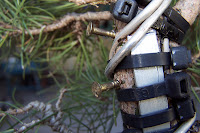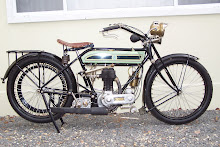This was a simple transformation of 2 seedlings into a very good Bonsai starter in a matter of 1 hour . Firstly i removed a small sliver of bark all the way down to the hardwood on both plants . Then i wrapped the 2 trunk bases together with duct tape or electrical tape to hold the veneers together . I then applied cable ties to the join in the trunks and secured to prevent movement and to allow the trunks to fuse together .



Repotting into a larger pot than normal and securing the plant so i could wire without damaging the roots . Then i set about applying the wire and styling the trees , the end result is 1 very nice Bonsai starter which will be allowed to grow on unchecked or  trimmed for a couple of seasons .
trimmed for a couple of seasons .
 trimmed for a couple of seasons .
trimmed for a couple of seasons .This method of joining the trunks has many uses in Bonsai for producing thicker trunks as well as multi trunks and improving branch structure . The age of the seedlings used is 2and 4 years in training for 5 minutes















































